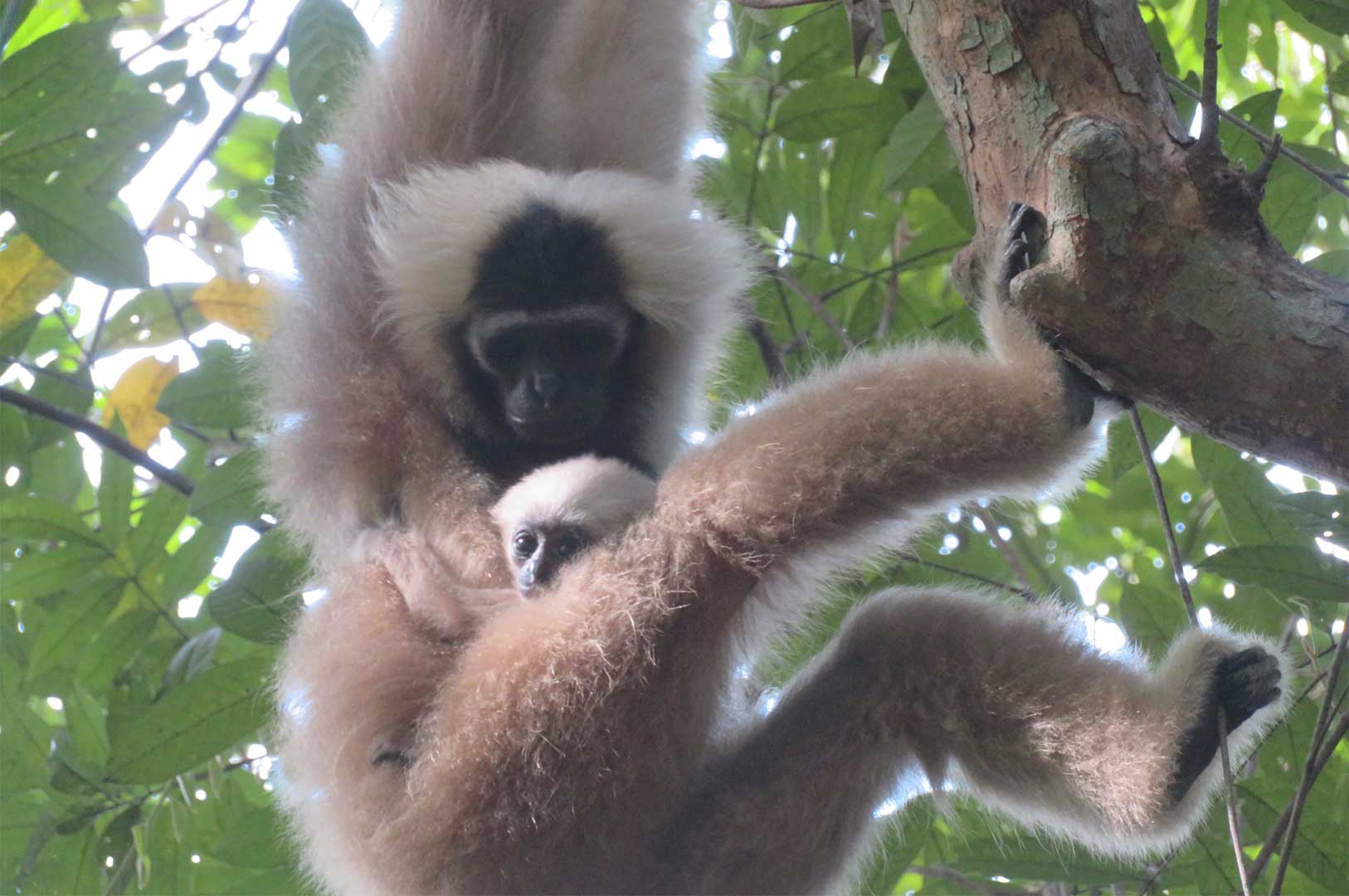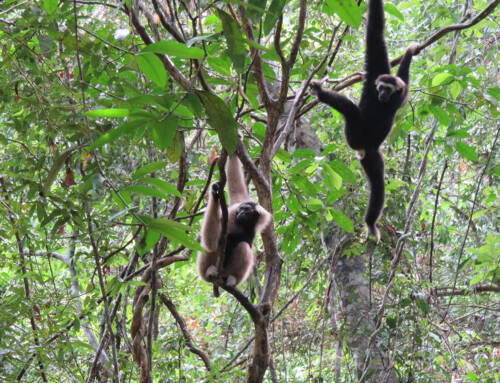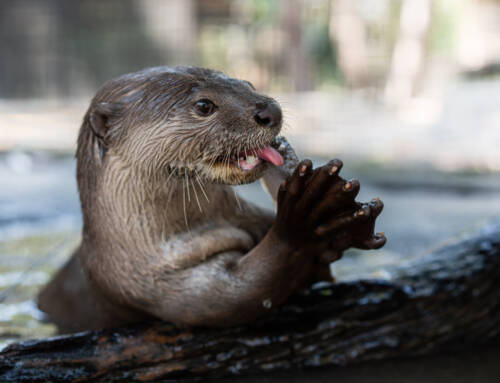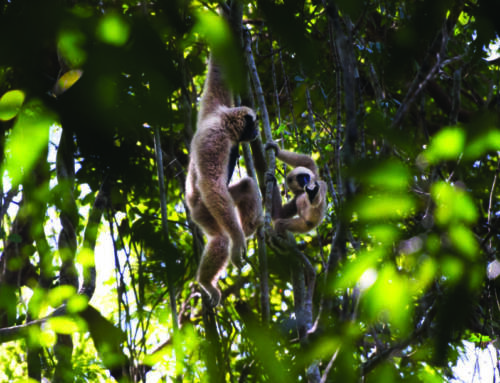In the lush expanses of the Angkor forest, a remarkable story of wildlife conservation and sustainable habitat restoration continues to unfold with great success. We are thrilled to announce the arrival of the third generation of gibbons as part of our re-wilding project in cooperation with the Apsara Authority and Forestry Administration, an initiative that has seen the flourishing of these charismatic primates in their natural habitat. The journey began back in December 2013, when two gibbons, Saraynick (female) and Baray (male), were released into the wild. This pioneering pair adapted wonderfully to their new environment, setting the stage for what has become a thriving gibbon population in the area.
Second Generation: The Pioneer Offspring
The first significant milestone was marked with the birth of Pingpeeang in September 2014. Pingpeeang, a female, grew up in the dense canopies of Angkor, under the watchful eyes of her parents and the dedicated conservation team. Saraynick and Borey’s conservation success did not stop with Pingpeeang. In July 2017, they welcomed another offspring, Changeth, a male. Changeth’s arrival added more dynamism to the growing gibbon community. This was followed closely by the births of Kantelong in March 2020, and Kdam born in October 2023.
Gibbon matchmaking: Expanding the Family
Pingpeeang was paired with Bakheng, a male gibbon from Phnom Tamao, in 2020 and they embarked on their wild life together in 2021. After two years of companionship, their relationship has solidified, reflecting the natural bonding behaviors of gibbons in the wild. Meanwhile, another pairing occurred between Changreth and A’ping (female), born to Bayon (male) and Tevy (female) in July 2016, thus expanding the interconnected relationships within the gibbon families at Angkor.
Third Generation: The Future Unfolds
The latest news that fills us with hope and excitement is the birth of Khmum in January 2024, whose gender remains to be identified. And the birth of Oumal just a few months ago in April 2024. These births mark the third generation of gibbons originating from our initial pairs, Saraynick and Borey and Bayon and Tevy, signifying a robust population. These births are not just additions to numbers; they represent the ongoing success of a carefully managed re-wilding effort.
Conservation and Community
The gibbon re-wilding project at Angkor is more than just about breeding and releasing animals; it’s about creating an ecosystem where these animals can thrive independently. Each generation born in the wild boosts our hopes and underlines the importance of long-term ecological restoration strategies. The gibbons themselves are vital for the regeneration of the forest, as they contribute to seed dispersal and the overall ecological balance.
Looking Ahead
As we celebrate these new births, our focus remains on monitoring the health and social structures of the gibbon populations, ensuring their habitat remains secure and undisturbed, and fostering a deep connection between the local communities and the conservation efforts. Each milestone reached is a step towards a future where the haunting songs of the gibbons will continue to echo through the forests of Angkor, a testament to the resilience of nature when given a chance to recover.
In this beautiful corner of Cambodia, the story of the gibbons is a beacon of hope and a blueprint for re-wilding projects worldwide. It showcases how dedication, science, and community involvement can come together to make significant environmental impacts. Let’s continue to support and watch eagerly as the next chapters of this remarkable conservation tale unfold.




